Tag: Illegal Wildlife Trade
In partnership with Taronga Zoo, San Diego Zoo and TRAFFIC (the wildlife trade monitoring network) we have launched a global campaign to help put a stop to the ruthless illegal wildlife trade – an industry which is threatening the future of many of the world’s most iconic species.
Sarah Stoner, worked for TRAFFIC as their senior crime data analyst in South East Asia, and below she tells us more about the role, why we’re encouraging you to become a wildlife witness, the reason behind the development of a Wildlife Witness smartphone app and how your support will help save wildlife.

“Data is power and my role in TRAFFIC simply couldn’t happen without it. It drives and informs our understanding of thousands of species that are endangered and threatened by persistent illegal wildlife trade.
“TRAFFIC collects a variety of information from different sources which is processed, evaluated and finally analysed to produce reports on emerging and historic illegal trade issues.
“My most recent work examined the growing threat to wildlife from trade on the internet. We know this particular trade has been growing in popularity in recent years, however, the extent to which social media is being used is a great cause for concern. This is further compounded by the suspicion that much of this activity occurs in areas online that are not accessible to the general public, such as closed Facebook groups. We undertook focused research just in Peninsular Malaysia over a five-month period to determine the level of illegal activity online; and the results were startling.”
The image below shows some of the key findings:
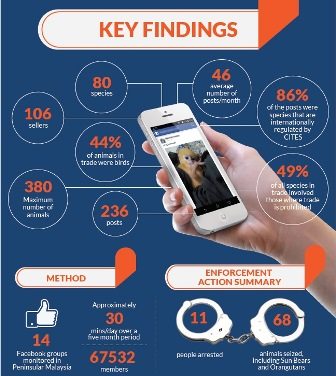
“The most revealing of all was the demand for native wild animals as pets. We unveiled a trend in the sale of high profile and threatened mammals, such as the sun bear and Sunda slow loris.
“Historically, opportunistic illegal wildlife trade posed less of a threat in Peninsular Malaysia due to the absence of physical markets. These virtual markets on social media now appear to facilitate the live animal trade in similar ways to open physical markets.
“Over the years TRAFFIC has been actively involved in the exposé of many physical market places that overtly offer illegal wildlife products for sale. Thankfully, these outlets are reducing and are not as prominent as they once were. However, it is likely that illegal wildlife trade will just be displaced elsewhere because of demand and financial gain. Both of these driving forces are often compounded by weak enforcement and/ or penalties that fail to act as any kind of deterrent. Unfortunately, this situation is not unique to Malaysia.
“In September 2014, TRAFFIC launched the Earless Monitor Lizard Report. This report is especially important as it highlights two key problems that affect and challenge much of my work as a wildlife crime analyst.
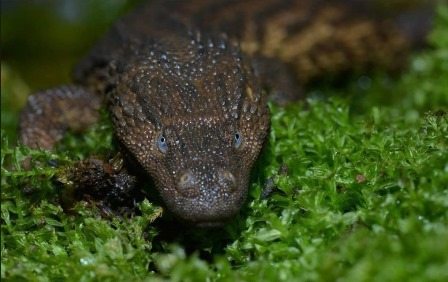
“The first is the growing and unregulated role of the internet and social networking in the trade of endangered and desirable wildlife. The second is the vulnerability of some of the world’s most enigmatic and charismatic species; traits which offer great appeal for specialist collectors around the world.
“Earless monitor lizards are fascinating reptiles and truly a living fossil!
“We found that after not having been seen in trade for decades, international trade of the species was identified as occurring predominantly online. The internet, especially social networks, was found to be facilitating this trade, either directly by enabling open sale and trade exchanges, or indirectly through discussions around the species.
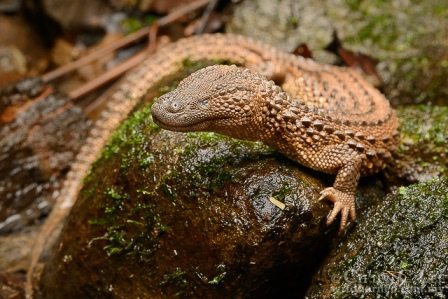
“We found trade present in at least eleven countries, including the US, across Europe, Japan and Indonesia, with at least one hundred individuals offered for sale. My job involves continuing to monitor this trade as it grows unabated.
“To address this growing problem and other prevalent wildlife trade issues, Taronga Zoo in Australia, partnered with TRAFFIC in South East Asia to create Wildlife Witness; a global community action tool. The Wildlife Witness smartphone app allows the public to easily report wildlife trade by taking a photo, pinning the exact location of the incident and sending relevant details to TRAFFIC.
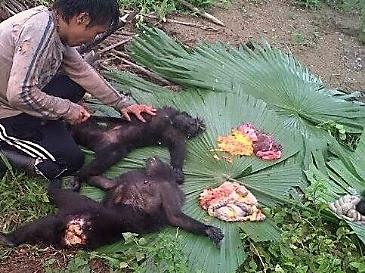
“I then analyse reports and where appropriate, incidents are referred to enforcement agencies for action. Essentially, Wildlife Witness reports help prioritise response action by improving our understanding of illegal wildlife trade, and highlighting areas in need of increased enforcement resources.
“The App complements TRAFFIC’s existing monitoring work by boosting our insight into wildlife trade routes; strengthening our research and supporting proactive law enforcement work.
“TRAFFIC is also working with a number of global partners including Chester Zoo, to promote the Wildlife Witness app. Reports made via the app are received and fed into TRAFFIC’s centralised global database. This is combined with other data and information I receive to allow me to report on chronic hotspots, transnational smuggling routes, trafficking methods, emerging species at threat and the organised criminality that facilitates trade.

“Together with sustained consumer behavioural change programmes TRAFFIC, and the global zoo community, are tackling the issue head on and working towards preventing and eradicating this damaging and unsustainable trade.”
Together we can wipe out illegal wildlife trade within our generation. Spread the word and help raise awareness. Find out more here.
Even though we want you to keep an eye out for any illegal wildlife trade activity and report anything suspicious you may see-we do want you to make sure you keep yourself safe at all times.
If you download the Wildlife Witness app you will be able to find more ‘reporting tips’-but we’ve put together a few below to get you started:
- Don’t put yourself at risk! Be sensible and discrete; don’t make your report directly in front of the witnessed trade and only take photos if it’s safe to do so.
- Don’t buy wildlife products or try to set up a sale; animals could be taken from the wild to complete your order!
- Don’t point out illegal items to the sellers or staff selling the products.
Look out for the different types of illegal wildlife trade-for example:
- Shops or markets – be extra vigilant when at markets and / or shops. Keep an eye out for medicines-souvenirs-carvings-trinkets-jewellery and fashion items that may be made using wild animal products.
- Restaurants – look out for wildlife items on restaurant menus-at food stalls or at road side eateries. Dishes on the menu that are described as ‘delicacies’ may actually contain illegal wildlife!
- Live animal displays – live wildlife can be on display in shops-restaurants or bars. Exotic animals that are being used for ‘tourist photos’ might have been sourced illegally and roadside zoos and private collections may also be stocked by illegal trade.
- Poaching – taking wild animals from their natural habitat is illegal so if you’re travelling to or near any forested areas keep your eyes peeled for any suspicious activity. If you spot any traps-snares or nets these are sometime a sign that poaching is taking place. Don’t touch them! Just record where you’ve spotted them-and make sure you include a description of the surrounding area.
DO – be careful not to arouse suspicion-if you think something illegal is taking place follow the staying safe tips and then make a report.
DO – steer clear of animals in markets and other public places that are used for a ‘photo opportunity’. If the animal is being used as a selfie prop or to entertain people chances are they are not happy. It is likely these wild creatures are being kept as pets and often mistreated with the aim of making them be able to be around humans like you.
DO – get out there! When done well eco-tourism provides an alternate income for local communities that would reduce their reliance on other activities that may impact wildlife or habitats.
DO – be mindful of your surroundings. Leave no trace. Take nothing from the environment (for example, coral while diving in the ocean).
DO – reduce demand for illegal wildlife parts and products by encouraging others to ask questions and get the fact before buying any wildlife of plant product.
DO – lend your eyes to the wild – download the Wildlife Witness and report any incidents of illegal wildlife trade that you may see.
For more information about illegal wildlife trade and how you can help in the fight against it – click here.
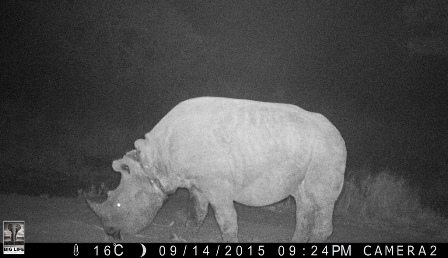
Please help us to find Bahati (pictured above), the orphaned rhino calf, who’s been trapped by a poachers snare in Kenya.
Last year we received the news that a young rhino, Bahati, had escaped from poachers who’d violently killed his mother for her horns. Despite being shot he somehow managed to escape.
We weren’t sure whether he’d survive the bullet wound or being alone at such a young age. However, amazingly he survived both! He was named Bahati, which means ‘good luck’ in Swahili.
We were delighted hear about his progress but today we’ve received devastating news that he has been targeted by poachers again.
Time is running out to find Bahati in the thick bush habitat. We’re already supporting the search but the more resources we can get out there to help, the more chance we have of finding this young rhino.
We received the below update from our partners the Big Life Foundation, who were quick to react to the news:
“We have watched him grow up, via images caught on camera traps, from his initial recovery from the bullet wound to his stumbling attempts to form social bonds with other rhinos.
“Yesterday, one of the same camera traps provided distressing news – Bahati has a poacher’s snare around his neck. It’s a snare targeted at rhinos, made of thick cable that would have pulled tight around Bahati’s neck as he walked through it. Somehow, after what must have been a horrendous struggle, he was able to snap the cable; a testament to the character of this rhino.
“However, in the process of fighting and breaking the snare, the cable has dug deep into his neck, and if we don’t find him in time to remove the snare and treat the wound, Bahati will die.
“The Kenya Wildlife Service (KWS) was quick to react on the news, and rangers from both KWS and Big Life flooded the area this morning, searching relentlessly all day. Having found fresh tracks, the Tsavo Trust and David Sheldrick Wildlife Trust stepped up immediately, providing an additional spotter plane and helicopter.
“Pilots and spotters spent the afternoon flying tight transects over the area where we suspect Bahati to be, the vet ready with a dart gun.
“Unfortunately, Bahati has not yet been found in the thick bush. The teams have headed back to base for the night, and somewhere out there, Bahati continues his struggle in increasing pain.
“Tomorrow at first light, the tracking process will start again. It’s heartening to see so many from different organizations coordinating the search. This might take days, or it might take weeks. There is no telling what the outcome will be, but no ranger on the job will rest until we have found Bahati.”
This little rhino deserves every bit of help – so please, please act now by donating money to help. If we don’t find Bahati soon we fear it might be too late.
Text ‘RINO15 £5’ to 70070 to donate £5 to Act for Wildlife. JustTextGiving by Vodafone. Alternatively you can make an online donation here.
*Our Text to Donate service is delivered through Just Giving. Texts are charged at your mobile phone operator’s standard rate. We will receive 100% of your donation. You MUST be 16 or over and must have the bill payer’s permission. For full Terms of Service please visit Just Giving (http://www.justgiving.com/info/terms-of-service).
The news came from Sabine Schoppe, the director of the Philippine Freshwater Turtle Conservation Program at the Katala Foundation. Over 4,000 turtles were confiscated from a convoy in South Palawan whose destination is thought to be China. Of those animals that were still living once confiscated, 3,478 Palawan forest turtles are still alive.
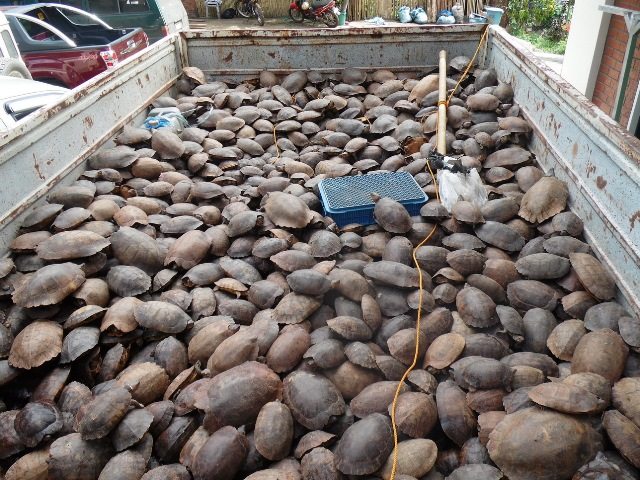
Credit: Katala Foundation
This number is astounding for many reasons – first, it indicates that our current understanding of the existing wild population is incomplete. It also means, however, that it is highly likely that much of the current population has now been removed from the wild and the survival of the species hangs in the balance.
Sabine responded immediately to the incident and is working with officials on this devastating event. Since the turtles were confiscated, over 100 have died and all of the very best efforts are being made to save those still alive. Unfortunately, it is not a simple case of just putting the animals back where they came from. Many of the turtles are severely dehydrated, some with shell rot and others with bite marks and open wounds indicating that these animals have been in poor conditions in captivity for a long time.
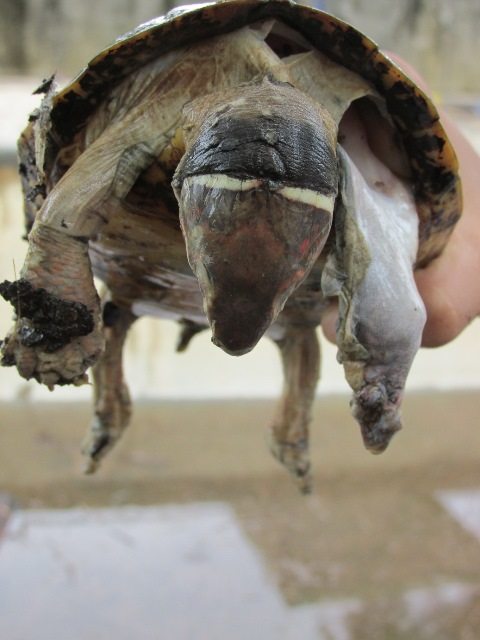
Credit: Katala Foundation
Sabine and her staff are desperately trying to save the survivors, however, Katala don’t have enough space to house all of the turtles in suitable conditions and with limited funds for food and shelter, the challenge of rehabilitating these animals is enormous.
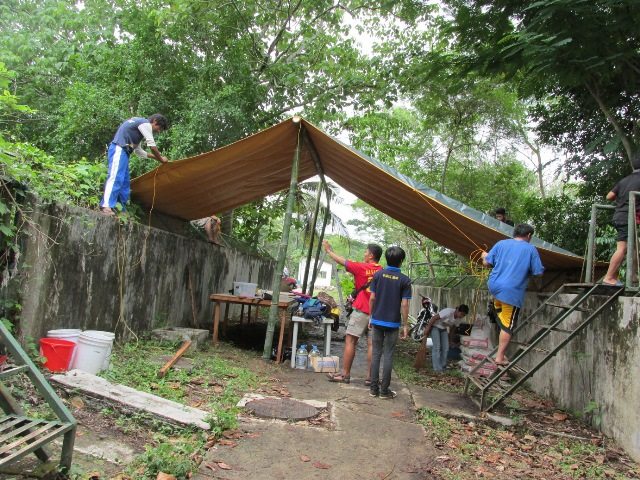
Not a huge amount is known about the Palawan forest turtle which is indicative of its’ critically endangered IUCN red list status. Since 2007, our partners in the Philippines, The Katala Foundation, have been working to address the threats to the species through a number of in situ and ex situ projects.
Being one of the world least known freshwater turtles, basic research on the species is essential for its conservation. Based on current knowledge only an estimated 3000 individuals remain in Palawan and are restricted to five municipalities in northern Palawan.
The main threat to the species is exploitation for the illegal wildlife trade and Katala carry out research, habitat restoration and protection and local awareness raising activities. Alongside these projects, Katala are heavily involved in the care and repatriation of confiscated specimens.
Chester Zoo has been providing financial support to Katala to conduct more research into this elusive species’ ecology, so that a better informed management and protection strategy can be formed. Particularly intensive work has gone into investigating the home range and distribution patterns of these turtles. This information is important as it lets the people at Katala working to save this species know where it is most important to focus efforts.
Chester Zoo has sent some emergency funds to Katala but more is needed. Keep an eye out on our social media for updates and how you can Act for Wildlife and save this species from eradication.
Update
Thanks to your overwhelming response to this emergency appeal you helped us save the vast majority of these endangered turtles rescued from the illegal wildlife trade.
You can read the latest update here.
To give your continued support, donate online here.
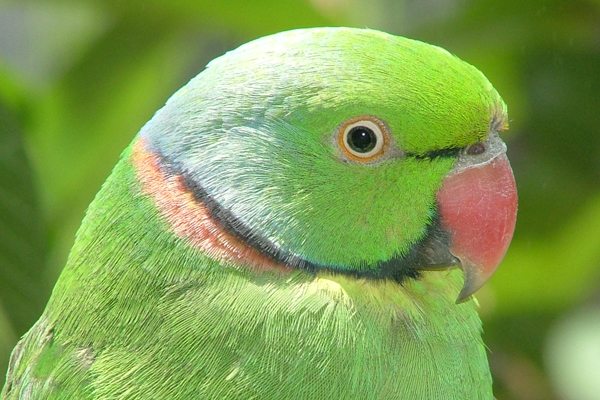
Support Act For Wildlife
By the time you’ve read this page, Earth will have lost an area of forest the size of eleven football pitches. That’s devastating for wildlife. It will probably cost a family of orangutans their home.